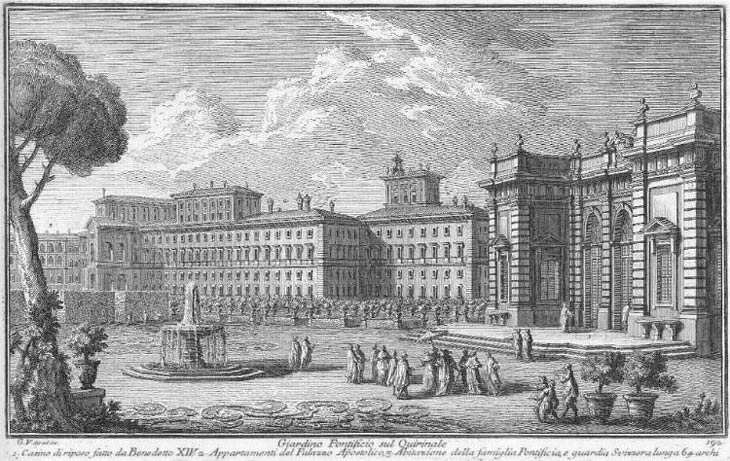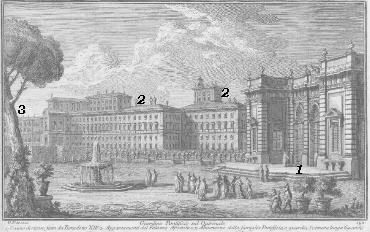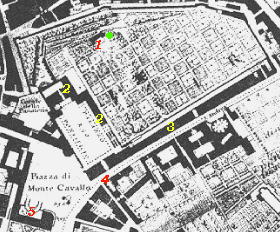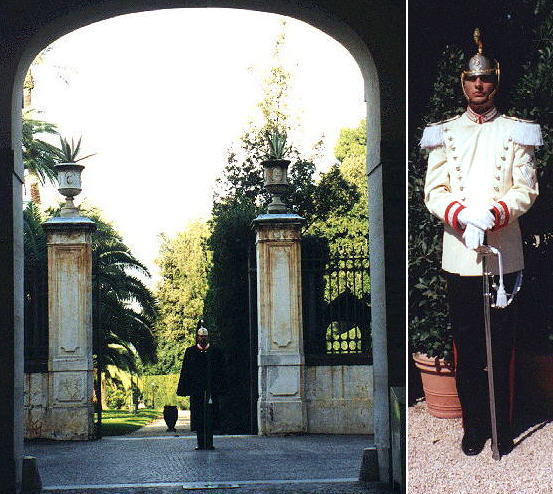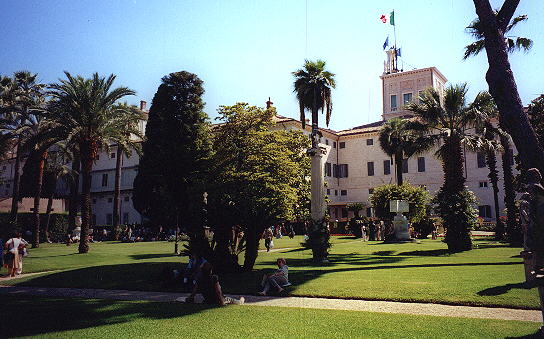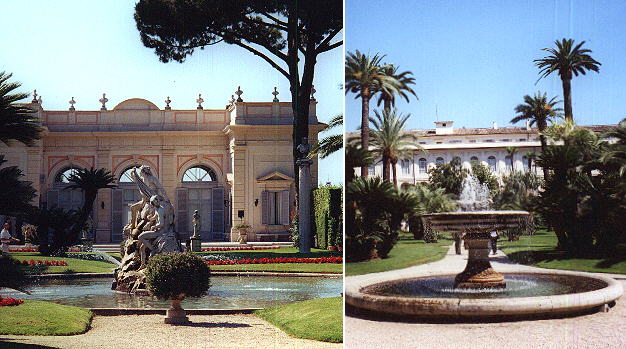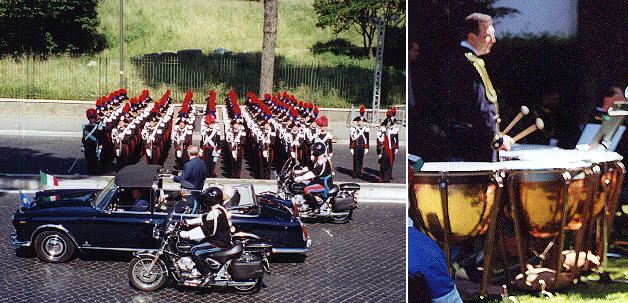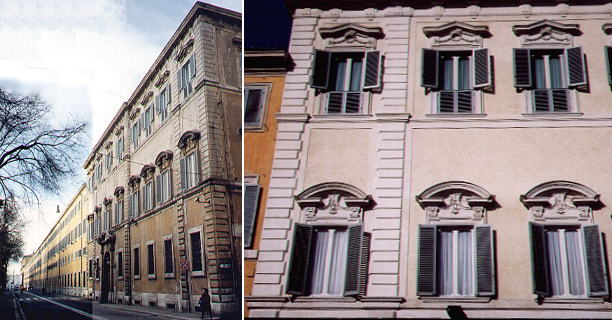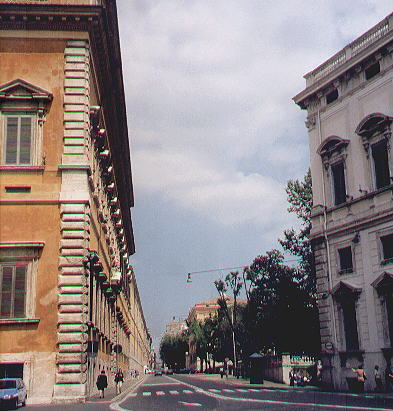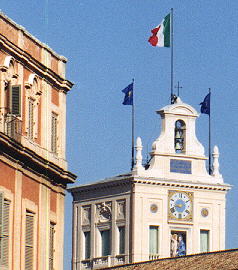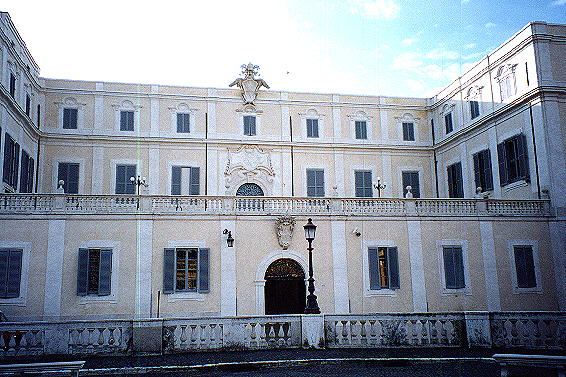  Giardino Pontificio sul Quirinale (Book 10) (Map B3) (Day 3) (View B7) (Rione Trevi) In this page:
The view is not so much of the gardens, but rather of the palace,
seen from the inside. The view is also interesting for its representation
of the Papal court. The view is taken from the green dot in the small 1748 map here below.
In the description below the plate Vasi made reference to: 1) Casino built by Benedictus XIV;
2) Papal Apartments; 3) Buildings for housing the servants and the Swiss Guard (Manica Lunga).
The small map shows also: 4) S. Maria Maddalena; 5) Papal stables.
The Palace is today the residence of the President of the Italian Republic and the gardens are not opened to the public. A special regiment of Carabinieri (the Corazzieri) is entrusted with the security of the President (on the right a Corazziere in his summer dress).
This year (2000) the President of the Italian Republic, Carlo Azeglio
Ciampi opened the gardens of the Palace to celebrate
the anniversary of the Republic. The design
of the gardens has been altered by planting palms and pine trees,
but it is still possible to identify all the elements of Vasi's plate
including the little casino built in 1741 by Benedictus XIV (designed by Ferdinando Fuga) and
which is now called "the Coffee House".
For the occasion in the morning President Ciampi reviewed a selection of the Italian Army and in the afternoon the crowds in the garden were entertained by various bands (in the photo the Carabinieri present arms to President Ciampi on a vintage car and a moment of Rossini's Gazza Ladra overture).
The long building (a barrack s for the Swiss Guard) described by Vasi is
called Manica Lunga (Long
Sleeve) and as Vasi says it was designed by Gian Lorenzo Bernini under Alexander VII. It
was completed under Clemens XII by the Florentine architect Ferdinando Fuga in 1730-32 who also designed
at the end of Manica Lunga a small palace for the residence of Segretario della Cifra, the assistant
to the pope in charge of ciphering his secret letters. The palace is now the private apartment of the President of the Republic.
The long corridor of Manica Lunga is embellished with Vasi's plates.
Opposite Manica Lunga there were several monasteries. When the Quirinal
became in 1871 the palace of the excommunicated King of Italy, the presence
of these monasteries became somewhat embarrassing and they were pulled
down. The most important among them was the monastery of S. Maria Maddalena,
which was located very near Piazza del Quirinale (where now there is a
public garden). The photo shows Via Pia (today known as Via XX Settembre),
which leads to Porta Pia.
What was the color of the buildings we see in Vasi's plates? The plates do not give us the answer, but for sure it was a light color. The paintings with views of Rome by a contemporary of Vasi, Giovan Paolo Pannini tell us that the predominant color of the main palaces of Rome was light grey if not white. Yellow and red became the predominant colors in the XIXth century and most likely for practical reasons. The stables of the Quirinale (building on the left in the picture above) have just been repainted with their XVIIIth century light colours (below).
Excerpts from Giuseppe Vasi 1761 Itinerary related to this page:
Next plate in Book 10: Giardino Colonnese
Go
to |
All images © 1999 - 2003 by Roberto Piperno. Write to romapip@quipo.it
